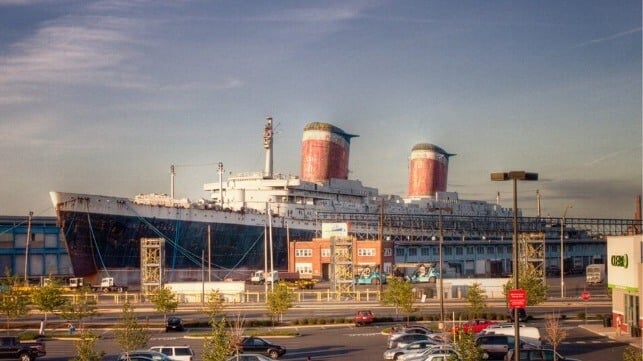Court-Supervised Mediation to Resolve Fate of Famed Ocean Liner

The U.S. Eastern District Court for Pennsylvania ordered the dispute over the docking of the famed ocean liner SS United States into mediation in an effort to bring it to a close. The judge said she saw no reason that the proposed deal to reef the ship off the Florida panhandle should not proceed.
Judge Anita Brody referred the dispute over the docking of the retired liner into the hands of a court-appointed mediator Paul S. Diamond for immediate mediation. Lawyers for the dock operator Penn Warehousing & Distribution proposed the concept of court-supervised mediation and it was accepted by Okaloosa County, Florida, which has a contingent agreement to acquire the vessel from the SS United States Conservancy for the purpose of reefing the ship. It would become the largest artificial reef and the country hopes a major attraction for divers.
Judge Diamond later of Friday set a fast schedule to move the situation forward. He directed that the parties should submit a Settlement Memoranda by midday Monday, September 16. A settlement conference is scheduled for Wednesday, September 18, and he directed the lawyers for the SS United States Conservancy and Penn Warehousing must attend. He also requested that the Deputy County Administrator for Okaloosa County be available by video conference.
The case had returned for a third time in front of Judge Brody after the vessel’s owners accused the landlord of bad faint negotiations and efforts to block the sale of the ship. The Conservancy asserted that the landlord was trying to block the deal so that it could seize the ship. Penn Warehousing made discussing extending the docking at the Philadelphia pier beyond the court-ordered eviction on September 12 contingent on a $3 million payment from Okaloosa Country.
The lawyers called the $3 million demand a negotiating tactic according to a report in the Philadelphia Inquirer. They contended that Okaloosa had walked away from the negotiations which they said were in “bad faith.”
Okaloosa made the acquisition of the vessel contingent on obtaining extended docking in Philadelphia until possibly after hurricane season. Alternately, in the court filing this week they reported they were working with a company and could possibly remove the ship by late September or early October. They plan to move it to a pier in Norfolk, Virginia. The county has received a remediation proposal that would cost millions of dollars to empty and clean the fuel tanks and remove PCBs and other contaminants before the vessel could be reefed.
The Okaloosa Country Board of Supervisors had delayed a vote on the contract to acquire the ship due to the dispute with Penn Warehousing. The vote was tentatively rescheduled for September 17. In addition, neighboring Escambia Country in Florida also continues to express interest in the vessel and recently authorized an effort to explore fundraising for a similar reefing operation.
Built in the early 1950s and designed by one of America’s foremost naval architects of the era, the liner broke the trans-Atlantic speed records for a passenger ship in 1952. She was hailed as a marvel with reports during her sea trials she traveled at over 38 knots. Her speed supremacy was never challenged but by the 1960s she was uneconomical for commercial operations and retired in 1969.
The U.S. Government initially acquired the vessel and considered concepts including converting her into a hospital ship. She had been built anticipating possible conversion for use as a troopship. Instead, she was sold to a time-share and real estate developer in 1980. Plans to restore and operate the ship were never completed but her interiors were stripped and since 2011, the non-profit SS United States Conservancy has owned her and proposed repurposing the ship into a static, multi-use attraction.
The Conservancy promoted her as America’s flagship and a national symbol hoping to attract partners for the redevelopment. Okaloosa Country agreed to help establish a shoreside museum as part of reefing. The ship is one of the last surviving examples of the heyday of trans-Atlantic passenger travel.
